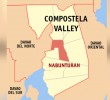The “quill” which has been known as the symbol of a class of people called writers is a weapon that ensues from a mandate the nature of which conforms with the individual writer’s world outlook—his weltanschaung. Every thrust made by the writer of his quill is in pursuance of tasks dictated by such mandate. He always wields his weapon in more or less strict adherence to how he has shaped his thoughts according to his view of reality. He does not swerve from the path of the ideals and principles upheld by his world view. He is ever faithful to the commanding sway of his passion as he tackles the requirements of his art. He writes even as he lives in the reality of what he writes.
My art is an integral part of my life as a creature of the historical events that have shaped the contours of my world outlook. My involvement in the radical activism of the 1970s has altered in a very revolutionary manner my way of looking at the realities in the world. What were previously held as absolute truths became myths if not outright falsehoods. The way I relate with people has of course been one of crossing new pathways, new territories, new perspectives.
The story of the First Quarter Storm (so called) has long been a part of the fibers of my soul. I was in the thick of the struggle for freedom during the terrible martial law years under the dictator Marcos. It is a story that needs to be told. It is not only a short story. It is stories within a long story.
Truly, our story in the nationalist movement constitutes an entire skyfull of novels and a whole world of full-length movies. My short story “Mga Landas ng Pangarap” which won a first prize award in the Palanca is just a miniscule fragment of an entire world of sagas and adventures of those who have taken upon themselves to light up the torch of freedom for our benighted land. My poetry derives inspiration from these little known adventures of the youth of that generation—the day-to-day joys and pains in mass work, organizing efforts, teach-ins, group discussions—not to mention the frequent protest actions that wore out our slippers and shoes on city streets and mountain trails, but which have at the same time thickened the skin on our soles. I am intimately familiar with these stories like I know the lines on my palms and the creases on my fingertips.
The play “Uyayi sa Digmaan” plucks a similar chord of inspiration in my heart. It is a story of a people who, since early childhood, has fascinated me. Their heroes and heroines spoke to me in my fantasies. Even just the way their women dress—the way they talk—are intriguing—so full of mystery. Much more, their history of struggles against the forces that have always failed to subdue them. In my heart of hearts, I find them not only worthy of admiration but, as an artist, I feel entrusted with an obligation to photograph and show glimpses of their experiences and their world heretofore wounded with wars and strifes.
My life has indeed been one of lifelong immersion in the rough and tumble world of human experience. I have dared to explore the armpits and groins of human existence, picked up the bits and pieces of adventures and misadventures of real-life people, intimately knowing their stories, empathizing with their strife-worn lives, familiarizing with the flesh-bone-and-blood of their heroes and heroines, what they believe in, how they manifest their beliefs, how they fought for the glory of their own people. Above all, I have been one with them in their struggles for humanity.
Indeed, I have romanced with life and all its mundane thrills and delights, in all the pains and wounds concomitant with the struggles for the uplift of the human condition. “I drank life to the dregs”. And every now and then , whenever occasions would allow, I dabbed perfumed phrases on whatever there was to render my soul’s stirrings –mostly songs and poetry.
Thus have I tried to be faithful to the mandate for which I have pledged to pursue my tasks as an artist in a world of challenges and struggles—in a world yet enduring the throes of revolutionary wars and change.










